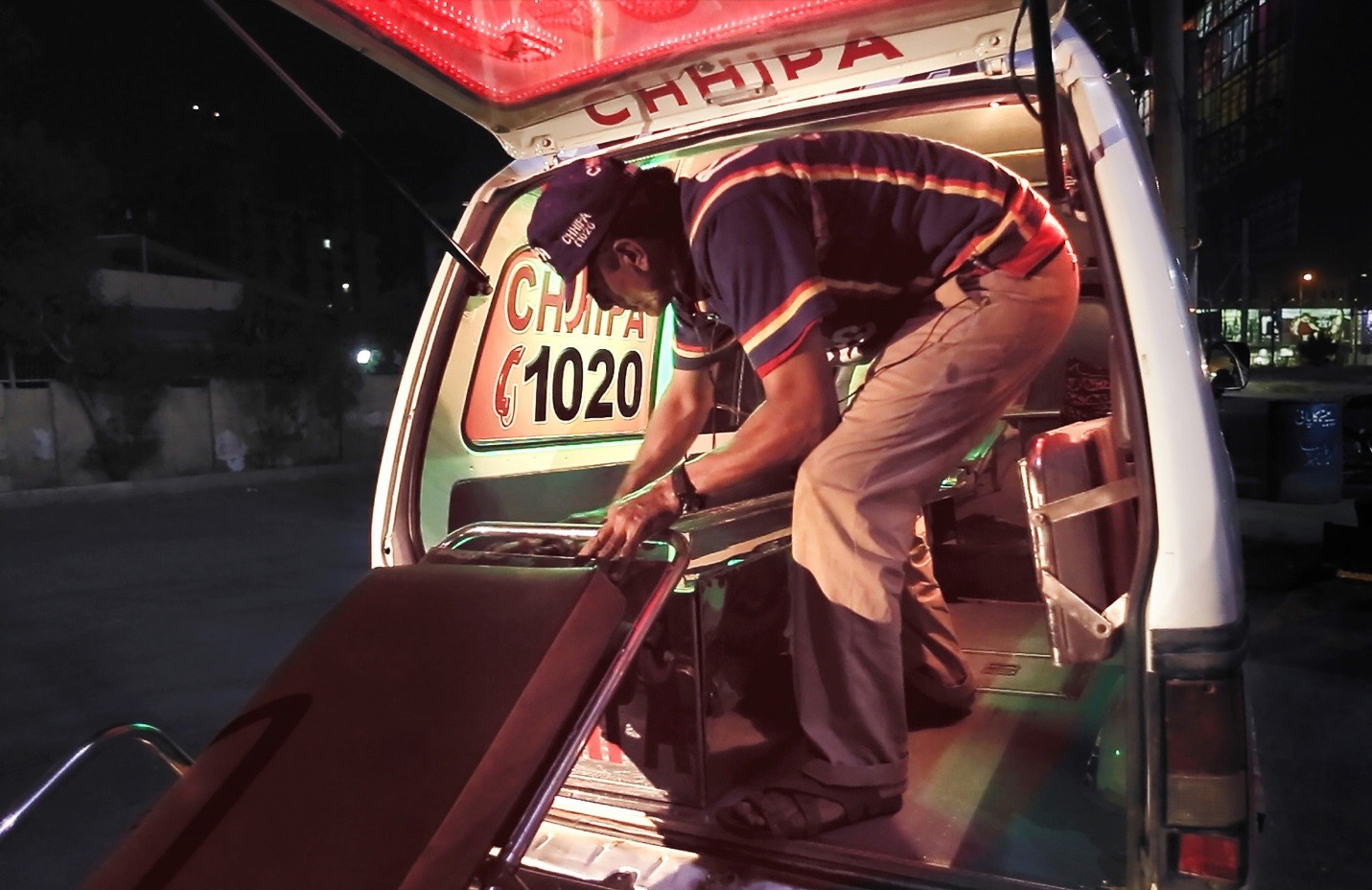Review by Professor Robert Abrams, Weill Cornell Medicine, New York
‘This Shaking Keeps Me Steady’ directed by Shehrezad Maher, India, 2018
Showing in the London Indian Film Festival (http://londonindianfilmfestival.co.uk/)
In the film, ‘This shaking keeps me steady’ the deep emotion and dreams stirred by traumatic scenes are sharply juxtaposed with acting, which is presented as absurdly false.
Ostensibly the film focus is about the lives of ambulance drivers in Karachi, Pakistan who on a daily basis witness appalling scenes of carnage, the results of accidents and intentional violence. These are the frontline emergency workers who are first on the scene, the men who confront bodies and parts of bodies on fire or under water—all sights, sounds and smells from which most humans would recoil.
What the film is actually about is the cumulative impact on frontline workers of these displays of horror, cruelty and tragedy. Also highlighted are the differences between representational and lived reality. In a kind of parallel process, the film’s scenes alternate between interviews with the ambulance workers in one segment, and in the next, actors creating “re-enactments” of the underlying stories and the landscape of disasters or terrorist attacks. The workers speak quietly and soberly; having learned to suppress their immediate emotional reactions in order to get on with the job, they downplay the intensity of their responses to the gruesome spectacles they encounter. But the workers’ accounts have a compelling authenticity, while the actors who aim for perfection cannot seem to make anything believable. Sometimes the drivers are brought in to the cast of films to play minor roles, in the hope that their presence will somehow lend the productions a measure of credibility. One such worker finds to his astonishment that, alone among the whole cast, “I’m the only real character.” The others are emotionally flat to the point of parody, supporting the belief that tragedies and accidents cannot be profoundly felt in the third person.
It is in the nature of human emotional responses to trauma that one single exposure or experience can reverberate disturbingly in a person’s conscious and unconscious mind for the rest of his life. But in the starkest of contrasts, the actors portrayed here replay a scene ten or twenty times, take after take, trying to get it right, only to end up with a banal, easily forgotten message, one that is not even frightening.
The subdued, restrained tone of the ‘real’ workers’ responses to the interviewers belie the emotional magnitude of their experiences. The psychoanalyst Otto Fenichel wrote about the phenomenon of ‘traumatophilia,’ whereby exposure to shocking scenes in adulthood can stimulate and compound memories of traumatic events reaching back to early childhood.1 In fact, several of the workers respond to the interviewer’s questions with reports of dreams, one about the death of his mother when he was two years old; another driver dreams about the death of his young son. A third encapsulates the fear that the ambulance drivers all feel but cannot acknowledge to themselves in the moment of danger, and that then becomes the stuff of dreams. This dreamer, lost in a forest, finds himself terrified by ferocious animals, but is advised by a white-haired sage to put down the light into which he has been staring closely; he does so, and he is shown the path to safety. Shining a light too deeply into the heart of darkness, the dream seems to imply, can upend one’s mental balance, one’s very ‘steadiness.’

But it is another worker’s account of a young mother who tried to drown herself and her 8-month old infant, that emerges as the most powerful and memorable story of the many told in this film. Saved by the air-pocket created by her burqa, her infant also miraculously alive, the woman attempted for a second time to complete her suicide. What kind of torment and despair could motivate such a determination to die and destroy? Those questions must remain unanswered, but the witnesses and participants in this rescue will be changed forever.
There is a single moment that is most consequential, revealing the unavoidable occupational hazard of these men: One worker starts to describe his experiences as an ambulance driver, which ranges from happiness to sadness, but then he corrects himself: “No, actually, the sadness is always there.” Also ever-present is the “shaking,” the unpredictability of real life in which horrific accidents can occur at any moment, but against which emotional balance must somehow be grounded. The film’s fittingly oxymoronic title, ‘The shaking keeps me steady,’ a line borrowed from Theodore Roethke’s poem, ‘The Waking,’ captures that experience perfectly.
[1] Fenichel, O. The Psychoanalytic Theory of Neurosis. New York: Norton, 1945.